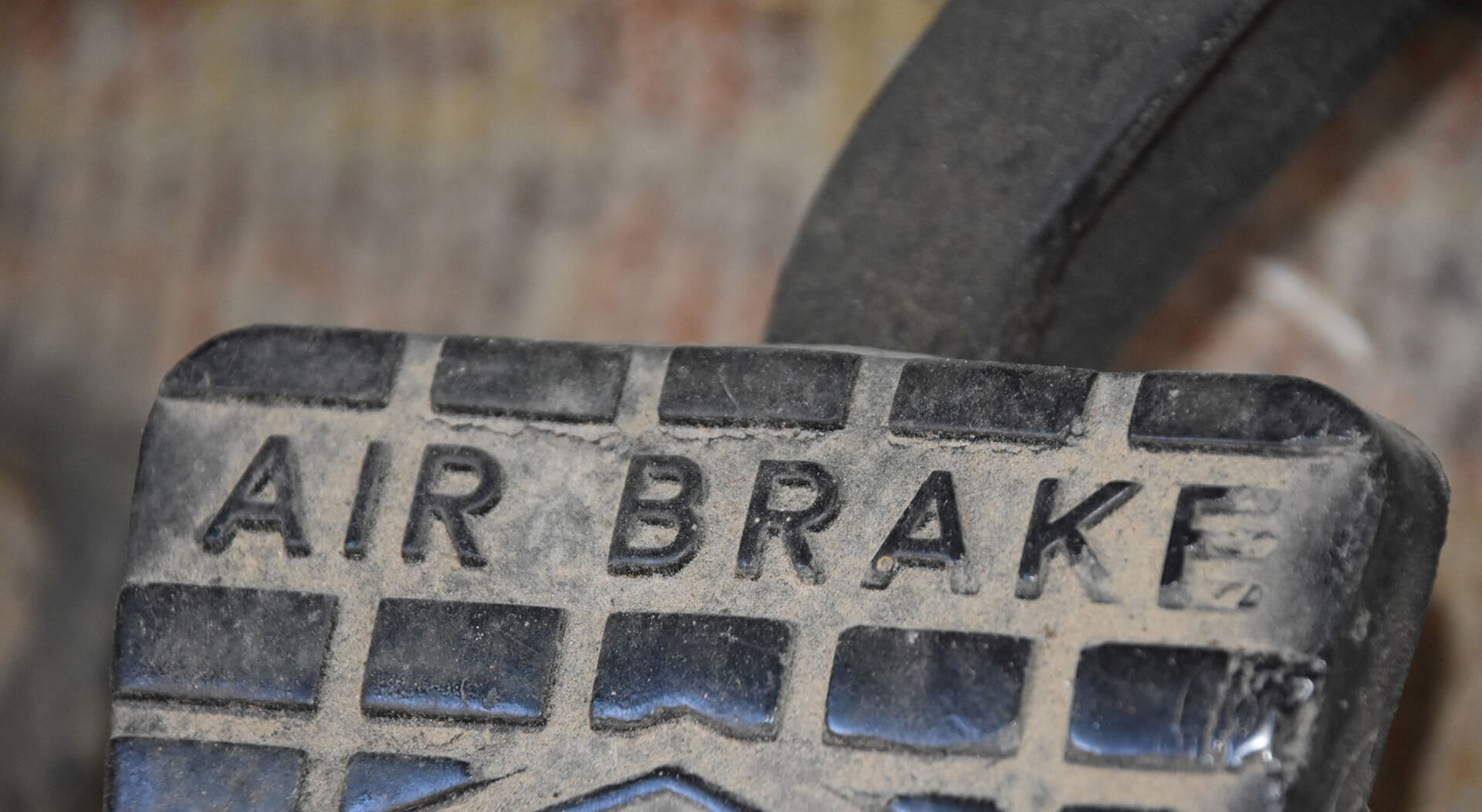How to Maintain Semi Truck Brakes (A Must Read for Safety)

The brakes of a vehicle are its most important safety feature. Maintenance services like brake inspection, brake pad replacement, fluid flushes, and hose replacement are very essential to keep you safe on the road. These items doubled for semi-trucks. Besides promoting safety, updated brake maintenance can reduce semi-truck breakdown, downtime and repairs. Below is a basic guide on how to maintain your semi truck brakes.
What’s Inside
- What Kind of Brakes Do Semi-Trucks Use?
- How to Maintain Semi-Truck Brakes?
- Ensure that there is enough grease on the S-cams and Slack Adjusters
- Inspect the brake hoses and linings
- Regularly check the air compression gauge before driving
- Replace broken parts of the braking system as needed
- The Bottom Line
What Kind of Brakes Do Semi-Trucks Use?
Semi-trucks use an air brake system that comprises 3 different types of brakes: air brakes, emergency brakes, and parking brakes. Each of these 3 brakes plays a specific role in the operation of a semi-truck. They are all equally important, making the semi-truck brake system a little bit complicated.
Air Brakes
Air brakes run on an unlimited supply of air making them extra reliable for heavy vehicles. They work when friction is applied to the brake pad. Compressed air stored in a brake system tank shoots out pushing a piston. The piston then puts pressure on the brake pads causing the truck to stop. The foot valve determines the amount of compressed air that will come out to push the piston. A gentle tap on the piston valve may not be enough but a really hard push on the foot valve can release the needed compressed air to stop a truck.
Emergency Brakes
If the air brakes of a semi-truck lose pressure, the emergency brakes will engage. Such a system saves many pedestrians, travelers, and truck drivers from very dangerous situations. Semi-trucks who lose their regular brakes are most of the time uncontrollable. The air brakes of a semi-truck are connected to 2 supply lines. The first line is connected to the compressed air tank for regular braking. The other line is called the emergency line or supply line with larger red fittings. Once a reservoir tank runs out of compressed air, the emergency line will fill it with air pressure to activate the brakes.
Parking Brakes
Parking brakes are very important when a semi-truck is put to a halt. Most truck drivers forget to put them in from time to time. That is why we commonly see semi-trucks rolling away without a driver. Both a tractor and a trailer have parking brakes. The type of parking brakes depends on the size and weight of the vehicle. Parking brakes commonly control the rear brakes of a semi-truck. When they are on, cables and springs will compress the brake shoes to keep the vehicle in its location.
How to Maintain Semi-Truck Brakes?
Proper maintenance of a semi-truck should include a routine inspection of the brake system. Regular brake services vary based on the semi-truck model. But it is best to have a brake inspection from a reliable mechanic every time a semi-truck has changed oil. From time to time, truck drivers should also make a brake inspection before long-haul trips. They can do this using a wear gauge. Such a gauge indicates how much the brake system has worn down. Alternatively, truck drivers can also determine the current condition of a semi-truck brake system through physical inspection and testing. Below are some ways on how to keep semi-truck brakes in good condition.
Ensure that there is enough grease on the S-cams and Slack Adjusters
The S-cams are the drums that link the foot valve with the brake pads, while the slack adjusters are the mechanical links that regulate the S-cams. These brake components must be greased well. The grease keeps them moving properly for the brake system to function at its best. Failure to grease them properly may cause stagnant movement that can result in braking failures. The absence of grease will also allow contaminants to enter the braking system and destroy it. A good grease option to use among the semi-truck’s S-cams and slack adjusters is lithium grease.
Inspect the brake hoses and linings
Brake hoses are rubber tubes that carry brake fluids to the brake lines. The brake fluid protects the metal component of the braking system. Brake linings apply a frictional force to the brake drums attached to the wheels of a semi-truck when the brake system is activated. They enhance wheel control and reduce the semi-truck speed. To maintain semi-truck brakes, ensure that the brake hoses and linings are at least ¼ of an inch thick. They should also be kept dry. Truck drivers should regularly check them for any cracks or damages. If they show these signs, immediately replace them.
Regularly check the air compression gauge before driving
The air compression gauge of a semi-truck’s pressure system should read more than 60 psi. Semi-truck drivers should regularly check them before driving. If the psi reads lower than 60, there is a need to service the brake system immediately. When the semi-truck is running, the ideal compression gauge must read between 100 psi to 125 psi. Should the reading go below or over the ideal pressure, a truck driver should immediately bring the truck to a mechanic for safety.
Replace broken parts of the braking system as needed
The brake system of a semi-truck consists of different parts. These are the:
- Air compressor
- Air compressor governor
- Air reservoir tanks
- Brake chambers
- Brake pedal
- Brake S-cam
- Brake shoe
- Drain valves
- Pushrod
- Return spring
- Slack adjusters
It is important to preserve each part for the brake system to function properly. The brake shoe has a built-in indicator that allows semi-truck drivers to know when to replace it. It is recommended to replace brake pads among semi-truck for every 250,000 or 300,000 mileages. Replacing the brake pads should also come side by side with the replacement of the bushings, pins, and springs.
The Bottom Line
The best way to maintain semi-truck brakes is for truck drivers to keep an eye on their components regularly. Make it a habit to check the compression gauge before and during truck operation. Ensure that there is enough grease on the S-cams and slack adjusters. At random, check the brake hoses and linings for signs of damage and thinning. As you see broken parts, immediately replace them. A brake system must be inspected by a truck mechanic every time the semi-truck undergoes an oil change. Keeping all these things in mind and applying them as you operate a semi-truck leads you to utmost safety.
And just in case you are looking into buying a new truck for your fleet, you can always browse our listings at UsedVending. Discover the greatest deals on medium and heavy-duty semi trucks in America.







